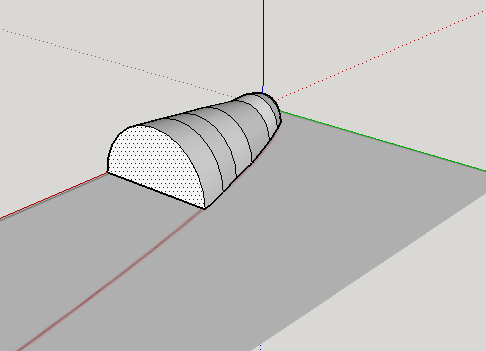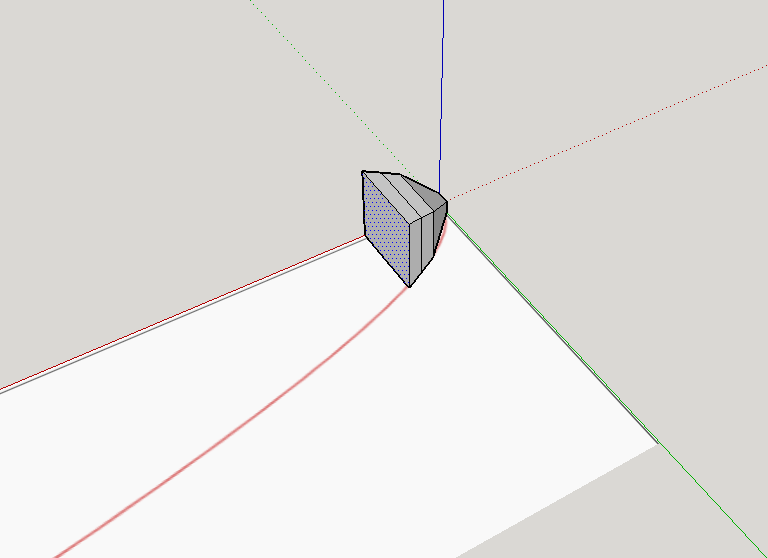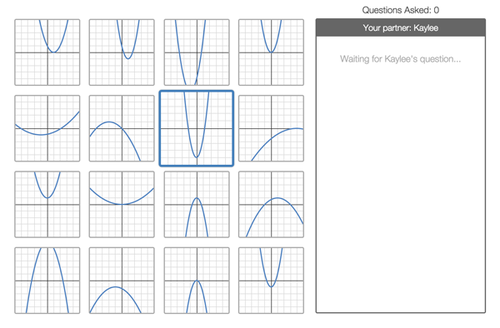For the last 3 years, I've taught in an entirely project based program. The switch back to regular ed has been an interesting one for me, as I can see the ways my pedagogy has changed but don't always have the time, resources, or freedom to implement these changes. I knew when I was given the opportunity to have a 2 hour block for a project instead of giving my AP Calculus kids a midterm that I wanted to jump on the opportunity. I adapted this Gorilla Jump activity from MAA (which is an amazing activity if you've never seen it!) into a project that would require more data collection. It was a real challenge for the kids, but they seemed to walk away with the big idea and were asking the right questions (even if they didn't have all the answers yet).
Students worked in small groups using this Driving Simulator (made on Scratch from MIT) to generate velocity data over even intervals.
They were free to decide what intervals to use and needed to be mindful of units as most were measuring in seconds while velocity was in miles per hour. This simulator also has weather and varies the time of day, so I had my kids react to these variables so it would affect their velocity. Some drove responsibly at 68 mph on the highway. Some just accelerated as fast as possible the whole time. I know who to watch out for in the school parking lot now.

Using that data, students generated estimates for total distance travelled using the lowest velocity on the interval, the highest velocity on the interval, and the average velocity on the interval. They were asked to represent these estimates graphically, which naturally leads to a rough version of a Riemann Sum. In addition, I asked them to challenge themselves to see if they could write an equation (using sigma notation if they were feeling extra fancy) to represent how to generally find the total distance travelled. This was frustrating for the kids, for sure. I used it mostly as a pre-assessment to see what they remember from the previous year on sigma notation. (Verdict: we've got some serious work to do there). They were able to discuss upper and lower bound and postulated that collecting data over smaller intervals would lead to more accurate results. All in all, it led to extremely positive conversations and I think they'll have a very solid foundation when we attach formal names and notation to these ideas next class.
A few notes of things that jumped out at me, having implemented it once:
- Since units were in mph and sec, there was converting needed. The kids didn't struggle with this, but it caused the outputs to be extremely small decimals for some groups. Just something to keep in mind.
- A lot of kids discussed ways you could have changed your driving to make your estimate more accurate instead of changing your data collecting methods. While a valuable conversation, some kids got lost on a tangent here and struggled to finish in the allotted time.
- Since there was no requirement that their velocity function be monotonic, using the lowest or highest velocity on the interval did not lead directly to a right or left hand Riemann sum. I know that's something that won't be a hard jump for my kids next class, but again it's something to keep in mind.
- The kids got really cranky having to make 3 of the same graphs by hand. If you have a way to photocopy them quickly, you'd have a lot fewer cranky 17 year olds on your hands. We didn't at the time (I wasn't in my classroom and we had limited time).
- The car has an odometer. It would've been interesting to copy down the actual mileage of the trip and see how far off we were, especially since we're talking about error. Missed opportunity, Gironda.
- There's got to be a cooler final product for this. Again, I had a limited time from in which to do this with my kids, so posters were concise and manageable. I know this could get pushed to be a lot better.
Let me know what else you might do to make this better. I liked it enough and it was worth doing, but would like to improve it for next year! I'll update with finished products from the kids when I get them!




















